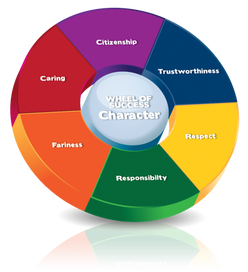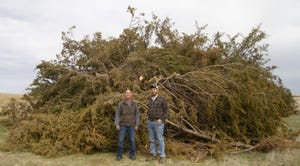Why ranchers have more clout than Dr. Oz
August 10, 2015

Last week, my sister Kaley competed in the 4-H Character Counts speaking contest at the Sioux Empire Fair in Sioux Falls, S.D. Her speech centered around the six pillars of character — trustworthiness, respect, responsibility, fairness, caring and citizenship. In her presentation, she related how she relied on the six pillars to write a persuasive paper for her college English class.
She talked about how she tackled the topic of GMOs by building a relationship with her professor built on trust and respect, responsibly researching the topic thoroughly before forming an opinion, being fair by also researching the opposing side, caring about her professor’s views on the topic by listening to her concerns, and finally, being a good citizen by advocating for the agricultural community and being well-informed when making purchasing decisions at the grocery store.
READ: Are beef producers prepared to defend GMOs?

Photo Credit: 4-H Character Counts
When it comes to relating to our consumers, we should certainly rely on the six pillars of character to build a solid relationship with the folks who trust us to produce safe, nutritious food. And it appears that sharing values with our consumers is all we need to make positive progress in educating folks about where their food comes from.
According to a recent consumer trust study conducted by The Center for Food Integrity (CFI), millennials, moms, and foodies are relying on farmers for information, not celebrity chefs or a certain televised doctor — the infamous Dr. Oz.
In a recent release about the study, CFI reports that although Oz has an estimated 2 million daily viewers, 3.78 million Twitter followers and 5.5 million Facebook “likes,” Dr. Oz ranked second to last when consumers were asked to rate their level of trust from different sources when it came to the issue of GMOs.
The research revealed that consumers look to university scientists first, followed by a scientist who is also a mom, and then a farmer. Dr. Oz came in 10 out of 11 sources, only edging out celebrity chefs.
READ: Death, liberty, Cheetos & the American way
The release also showed that on the issue of antibiotic use in food animals and antibiotic resistance in humans, the family doctor was the most trusted source, followed by university scientist and mom scientist. Once again, Dr. Oz came in last.
“It goes to show that ‘celebrity’ doesn’t equal ‘credibility.’ You don’t need a national TV show to be a trusted source when it comes to how food is produced today,” says Charlie Arnot, CFI CEO. “The voices of farmers, mom scientists and university scientists matter. The research is clear: consumers are looking to credible sources for balanced information so they can make informed decisions.”
Arnot says that effective communication is key when it comes to tackling controversial and scientific issues in agriculture and food.
“Too often the food system resorts to, ‘If we just give consumers more information, they’ll come to our side,’ but that approach doesn’t work,” says Arnot. “Our research clearly tells us that when consumers realize that the values of those in agriculture and food production are aligned with theirs – that each cares about the same things, like safe food, responsible production and quality animal care – they are more willing to consider information on an issue as personal as the food they feed their families.”
Even though Dr. Oz may have a larger platform than you or I, farmers and ranchers have the power to influence change and increase consumer acceptance of modern-day production agriculture. It may seem like good, old common sense, but let’s take notes from 4-H youth, who are learning from a young age that the six pillars — trustworthiness, respect, responsibility, fairness, caring and citizenship — are keys to being positive, effective advocates for the agricultural industry.
The opinions of Amanda Radke are not necessarily those of beefmagazine.com or Penton Agriculture.
You might also like:
Are feeder cattle prices on the cusp of a collapse
How to prevent foot rot in cattle
How to prevent & treat pinkeye in cattle
When is the best time to wean? It might be younger than you think
You May Also Like
.png?width=300&auto=webp&quality=80&disable=upscale)


